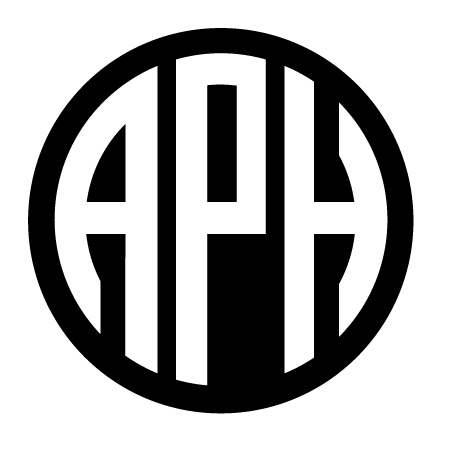APH News: October 2016
Your monthly link to the latest information on the products, services, and training opportunities from the American Printing House for the Blind.
Exciting New APH Products Announced!
Read on to learn about these new products – now available!
- APH Fall Harvest Sale
- New Downloadable Manuals Available!
- NEW! Tactile Graphic Line Slate
- NEW! Light In-Sight
- NEW! Gross Motor Development Curriculum for Children With Visual Impairments
- APH Braille Book Corner
APH Helps Release Annual Reports from Historic Residential Schools for the Blind

Perkins School, South Boston. 1838 hotel building used from 1839-1912
If you are doing a history project on one of the historic residential schools, your toolkit just grew a bit. Over this last summer, our museum intern, Mikayla Powell, spent most of her time scanning our collection of historic annual reports. Powell is a rising senior in the school of fine arts at the University of Louisville. Using APH’s Tabletop Scribe scanning station, she photographed every page of over 330 annual reports. Through our cooperative relationship with the Internet Archive, the reports were then uploaded to the Archive’s servers, and the scans were converted into searchable pdf files as well as accessible formats like Daisy, Epub, and full text. All of the newly scanned reports are now available for researchers and general readers worldwide. APH is cooperating with the archivists at Perkins School for the Blind, led by Jen Hale and Jennifer Arnott, to avoid duplication of effort on the scanning front, but between the two institutions, large numbers of residential school reports are now available. You can find a list of reports available from Perkins at http://www.perkinsarchives.org/annual-reports-us-canada.html.
Reports scanned at APH this summer included issues from Alabama, Arizona, Arkansas, Colorado, Connecticut, Georgia, Florida, Idaho, Indiana, Iowa, Kansas, Maryland, Michigan, Minnesota, Mississippi, Montana, Nebraska, New York, North Dakota, Ohio, Oregon, Pennsylvania (Western and Overbrook), South Carolina, Tennessee, Texas, Utah, Virginia, Washington, West Virginia, and Wisconsin. APH does not have every issue of each state school’s report, so our next step will be to reach out to the states to help fill in the gaps.
Here is a brief primer on how to use the newly scanned reports.
- Go to https://archive.org. You can type in the name of the school in the search box and go directly to a list of reports.
- One hint: remember that schools frequently changed their names over the years. For example, the Washington State School for Defective Youth thankfully became the Washington State School for the Blind in 1913. If you go to our on-line exhibit on the residential schools, found at http://archive.aph.org/museum/programs/schools/, the exhibit can help you with all the name changes.
- For more information, call Mike Hudson at 502-899-2365 or by email at mhudson@aph.org.
APH Gets Your Product Feedback!

APH always welcomes product feedback, both during product development and after its release. A few that came in recently regarding the Hop-A-Dot and Color-by-Texture Marking Mats include:
- “Great example of a tool for all—sighted and visually impaired” –field tester
- “We put the Hop-A-Dot in the kindergarten classroom as a center. The sighted kids spun the spinner, the braille student read the letter tactually, then made it with the bean bags. The sighted children were able to use the braille configuration on the spinner to tell if she had done it correctly or not.”
- “We had a few snow days where the students could not travel outside their dorms. I brought this over for group activities and all ages enjoyed the texture mats. Some sat at the table and had good conversations regarding what they were experiencing (e.g., ‘I really like the bumpy one. Which one did you like?’)-Occupational Therapist/Field Tester
Field Testers Needed!
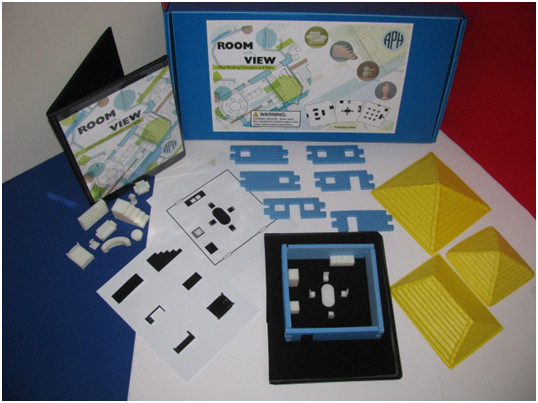
APH is currently seeking field evaluators for Room with a View (RWAV): Map-Reading Skills and Concepts. RWAV provides an interactive “room” and an assortment of 3D models and 2D graphics that can be used to represent the interior layout of a single room (e.g., bedroom, kitchen, school classroom) or larger venue (e.g., grocery, library, etc.). The use of the tactile room and related tangibles encourages the development and practice of cognitive mapping skills and spatial understanding. Other materials include interlocking foam walls, roofs, a felt board, and an activity guidebook.
Field testing will be initiated in late November 2016 and extend through the end of February 2017. The number of prototypes is limited. All evaluators will be asked to complete and return a Product Evaluation Form and related student outcome data by the end of the field test session.
If you would like to be considered as a field evaluator for Room with a View, please forward the following information to Karen J. Poppe, Tactile Literacy Project Leader by October 20, 2016, at kpoppe@aph.org:
- Your full name
- Your professional title
- School or Agency Name
- Type of setting (e.g., Residential, Resource, Itinerant)
- School or Agency mailing address including city, state, and zip code
- Your preferred reading medium (print, large print, braille, electronic)
- Email address
- Best phone number to reach you
- Number of your students who are able to participate
- Students’ ages
- Students’ grade levels
- Students’ primary reading medium (e.g. large print, braille, dual reader)
- Short explanation for your interest in field testing this product with your students
World Blind Union/International Council for Education of People with Visual Impairment General Assembly
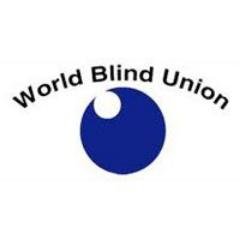
APH had a strong presence at the World Blind Union (WBU)/ International Council for Education of People with Visual Impairment (ICEVI) General Assembly, which was held in Orlando, FL this August. The theme of the conference was “Human Rights and the Convention on the Rights of Persons with Disabilities – What Lies Ahead?” From August 21 through 25, attendees, delegates, and other participants were able to view and try out a wide array of APH products at our booth. APH Materials enjoyed by over 400 individuals from all over the world, included: Address Earth, the Book Port Plus™, the Joy Player, the Miniguide US, Swirly Mats, the Orion TI-84 Talking Graphing Calculator, the Wilson Digital Voice Recorder, and a new prototype of the Orbit Reader 20. APH staff attending, exhibiting, and presenting included Craig Meador, President; Janie Blome, Field Services Director; Larry Skutchan, Technology Director; and Kerry Isham, Field Services Representative.
Graphiti—Experts Needed

Graphiti™ is a refreshable tactile touch display developed by Orbit Research in collaboration with the American Printing House for the Blind. Graphiti’s breakthrough technology allows graphics to be represented by means of an array of variable-height pins.
The current Graphiti unit pictured is a one-quarter size prototype. The final full-page unit consists of a 40 x 60 grid of variable-height, equidistant pins. Graphiti features the ability to detect touch, so the student can draw, zoom, or scroll directly on the display.
APH is seeking experts in the field of Assistive Technology, Tactile Graphics, and/or Accessible User Interface Design. Reviewers will test software, hardware, connectivity, design, and functionality of the Graphiti. Input is needed for the development of training materials for teachers and students, tactile graphics for specific content areas, and assessing the potential for use in the classroom and for online testing.
APH will conduct expert reviews in December, January, and February. Expert reviewers will work with the Graphiti for a one-month period. If you are interested in helping with this phase of development, please complete an expert reviewer form @ https://www.surveymonkey.com/r/graphiti-expert1
APH will conduct field evaluations of the full-page Graphiti with teachers and students in early 2017. Watch APH News for details and dates.
The Road to Accessible MAP
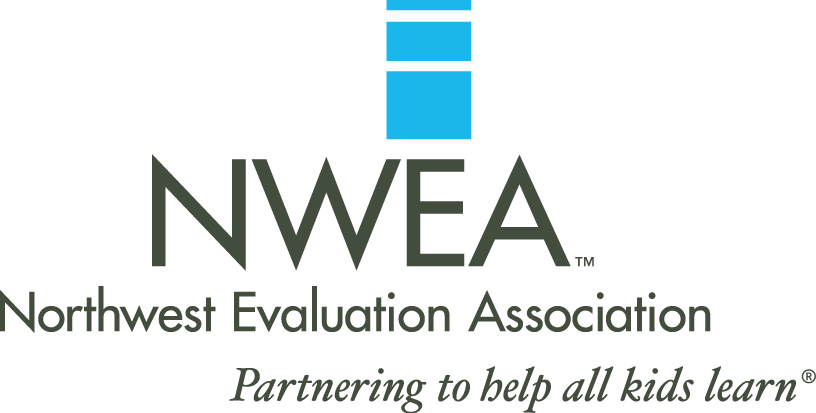
The American Printing House for the Blind has a keen interest in accessibility, and the influx of digital and online tests used in schools has posed new challenges for students with visual impairments and the teachers who work on their behalf. We have worked collaboratively with test publishers such as Pearson and ACT to ensure accessibility of these tools, but the challenge continues as tests taken on computers become more intuitive. Recently, APH had the opportunity to team with Northwest Evaluation Association to improve accessibility for students who are blind and visually impaired.
The not-for-profit Northwest Evaluation Association™ (NWEA™) is a global educational services organization. In 2016, NWEA products and services support educators and their students in over 7,800 schools, districts, and educational agencies worldwide.
Beginning in fall 2016, schools and districts began using an accessible version of NWEA’s Measures of Academic Progress ® (MAP®) growth assessment that supported refreshable braille display and JAWS screen reader. NWEA worked with various people, schools, and organizations such as Bryan Gould at the National Center on Accessible Media (NCAM) and Dr. Lisa Jackson at the Arizona School for the Blind. See the links below for articles by each of these individuals as well as others.
According to Brian Tosky, NWEA’s Product Manager of Platform Accessibility and Accommodations, “NWEA’s MAP tests incorporate Universal Design for Learning (UDL) principles to help meet the needs of learners who are visually impaired, helping us support our mission of partnering to help all kids learn. Using UDL principles and Web Content Accessibility Guidelines (WCAG 2.0), NWEA offers an accessible assessment which creates a student experience that is most authentic to their everyday learning needs.”
With permission from APH Vice President Dorinda Rife, APH Director of Accessible Tests Debbie Willis contacted NWEA and asked if they would be interested in having APH staff conduct accessibility reviews of MAP test items. Willis received a positive response from NWEA Product Manager Brian Tosky.
Tosky’s’s colleague Kat McLaurin agreed to set up four one-hour test sessions and to proctor these. McLaurin provided access to APH staff to sign in and take accessible MAP tests. Test takers at APH who agreed to participate in this important endeavor were Paul Ferrara, Communications Department; William Freeman/Technology Product Research Center; Kris Scott, Accessible Tests and Textbooks Department; and Carolyn Zierer/Research Department.
Ferrara’s’ review stated, “Nearly all English Language Arts (ELA) items were accessible; there was one drag ‘n drop which I reported to the (NWEA) team as inaccessible. The others were very accessible. ” Ferrara went on to say, “Most math items were accessible; there were a couple of items that may present cognitive overload. The second, more advanced math test, however, had several accessibility problems. There were several items with variables that were not spoken; others had graphs with no (text-based) descriptions, and answers where JAWS said only ‘checkbox’ because no alt-text was included. Overall the percentage of inaccessible items was low, and each item [with a problem] was reported as inaccessible to the [NWEA] team.”
Each of the four accessibility reviewers sent their specific concerns/issues directly to the NWEA team via their built-in reporting system. In addition, each of the four reviewers sent general reviews to Debbie Willis who shared these with NWEA staff. After testing was completed by APH staff, Tosky relayed, “…I want to thank you and everyone at APH who looked at our tests. We know that the only way we can improve and make our assessments fully accessible is by putting it in the hands of the experts and this feedback is only going to improve MAP.”
APH was excited by this opportunity to work with a the dedicated team at NWEA to help make the MAP test items as fully accessible as possible. Tosky and Jackson are presenting at the Council of Schools for the Blind (COSB) related meeting scheduled for Wednesday, October 5, 2016, which is the day before the 2016 APH Annual Meeting officially begins. In addition, several APH staff will be hosting and talking with Tosky about a few topics while he is in Louisville.
Below are some informative links regarding various aspects and people, schools, companies involved in working toward accessibility of MAP for test takers with visual impairments. Many thanks to NWEA staff and their commitment to a fully accessible version of MAP!
- https://www.nwea.org/about/history/
- https://www.nwea.org/assessments/map/accommodations-accessibility/
- https://www.nwea.org/blog/2016/what-does-equity-and-accessibility-look-like-within-assessment/
- https://www.nwea.org/blog/2016/three-field-study-pro-tips-going-rogue-by-creating-accessibility-in-the-classroom/
- https://www.nwea.org/blog/2016/assessments-build-student-independence/
- https://www.nwea.org/blog/2016/making-map-accessible-for-students-with-visual-disabilities/
- https://www.nwea.org/blog/2016/testing-students-who-are-visually-impaired-or-blind-what-am-i-missing/
APH Welcomes New Ex Officio Trustee
Barry McDaniel to The Lighthouse for the Blind in New Orleans, Inc.
Social Media Spotlight
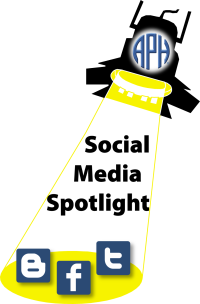
New Pinterest Content!
Are you following us on Pinterest? We are happy to report that recently we added three new boards, including Social Studies, Concept Development, and Language Arts. We also updated our STEM Resources board, changing it to STEAM Resources, reflecting the inclusion of art education and health science education as a part of this board. Now we offer a board that covers every area of the Common Core Curriculum and the Expanded Core Curriculum. Happy pinning!
"Like" APH at Our Facebook Page!

We invite you to visit our Facebook page and "Like" us! You can find APH at these social media sites: Twitter, Google+, YouTube, Flickr, Pinterest, and at our blog, Fred’s Head from APH.
APH Fall Harvest Sale
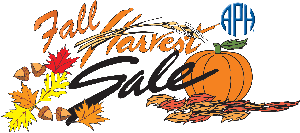
Load up a world of savings on selected APH products with APH’s Fall Harvest Sale 2016, October 1—December 31. As always, first come, first served.
New Downloadable Manuals Available

Get the manual you need instantly! APH offers a selected list of product manuals available for free download (archive.aph.org/manuals/). You may print or emboss these as needed. In most cases, we will continue to package hard copies of these manuals with their products and sell hard copy replacements.
Newly added manuals include:
- Gross Motor Development Curriculum for Children With Visual Impairments
- Teaching Street Crossings
- Push Button Padlock
NEW! Tactile Graphic Line Slate
1-00100-00 — $41.00
PermaBraille Sheets:
8 1/2 x 11 inches: 1-08884-00 — $14.00
11 1/2 x 11 inches: 1-08885-00 — $18.00

This one-of-a-kind slate helps you create raised lines for tactile graphics onto various media (braille paper, vinyl, foil, and drawing film).
The Tactile Graphic Line Slate and specially designed two-ended stylus accommodate the tooling of common tactile line types for creation of tactile graphic displays by transcribers, teachers, and students. Use this lightweight slate to embellish tactile maps, graphs, charts, number lines, etc.
Combinations of the available lines also generate unique, discernible line paths (e.g., dot-dash-dot). The pointed end of the stylus is used to tool the small dotted line, dashed line, thin solid line, and vertical bar line; the rounded end of the stylus is ideal for tooling the wide solid line and large dotted line.
The Tactile Graphic Line Slate mimics the design and function of a typical braille slate, making its use intuitive and user-friendly. Its blue-tinted transparent plastic allows both visual contrast against the drawing surface/paper, and positioning of lines in relation to surrounding tactile elements on the page.
The accompanying Instruction Booklet provides tips and techniques for using the Tactile Graphic Line Slate with various types of drawing media (braille paper, vinyl, heavy-gauge foil, and drawing film).
Includes
- Tactile Graphic Line Slate
- Two-ended Stylus
- Storage Pocket (for both slate and stylus)
- Instruction Booklet in Large Print and in Braille
Measures: 12 x 2 1/2 inches.
Recommended ages: 10 years and up.
NEW! Light In-Sight
1-08286-00 — $199.00

This kit enables science and physics students who are visually impaired and blind to construct ray diagrams related to light reflection and refraction.
Using hook & loop materials and stick-on drawing pieces, students can develop an understanding of the following light reflection and refraction concepts:
- Reflection and the law of refraction
- Diffuse reflection and total internal reflection
- Image formation by plane mirrors
- Refraction and refractive index
- Snell’s law of refraction
- Light transmission through a convex lens and image formation by a convex lens
- Light transmission through a concave lens and image formation by a concave lens
Unlike other tactile graphics, which are often static, diagrams constructed using this product are malleable, making the teaching and learning process interactive, dynamic, and fun!
Light In-Sight Kit Includes
- One working board and two storage panels
- Stick-on drawing pieces
- Teacher’s instruction booklet in large print and in braille
Recommended ages: 12 years and up.
WARNING: Choking Hazard—Small Parts. Not intended for children ages 5 and under without adult supervision.
NEW! Gross Motor Development Curriculum for Children With Visual Impairments
7-08400-00 — $36.00

This curriculum and video provide the foundation for an active lifestyle during childhood and beyond.
Movement is an essential component of a healthy, happy life. The child who is blind cannot simply "watch and do" like her peers with sight. Someone must teach her skills using tactile teaching methods. APH is excited to publish Gross Motor Development Curriculum (GMDC) by authors Pamela Haibach, PhD, and Lauren Lieberman, PhD.
This three-part book addresses the specific skills of children with visual impairments based upon research findings on fundamental motor skills. The curriculum (Part I and Part II) discusses general instructional strategies that are effective in teaching gross motor skills to individuals with visual impairment, blindness, and deafblindness, while it details specific teaching techniques, cues, and modified equipment for instruction of 16 gross motor skills. Part III, the appendices, provides protocols for children who have visual impairments, lead-up activities, and practice records. In addition, the practice records are available as a free download from the APH website.
The curriculum provides teachers and parents with a detailed breakdown of each locomotor skill and object control skill: description, materials, task analysis/practice, and teaching modifications and adaptations. Whether you use the Test of Gross Motor Development, FitnessGram®, or another gross motor assessment, GMDC will help your student learn and master the needed skills to perform with his or her peers.
Video
Watch children work around instructional barriers using whole-part-whole instruction, verbal instruction, task analysis, modeling, and demonstration. This instructional video and other downloadable materials related to GMDC are available on the APH Physical Education, Recreation, and Health website.
APH offers a number of recreational books in braille (Quota funds can be used). Each of these titles was originally transcribed and produced by APH for the National Library Service which has graciously granted permission for this offering. As usual, these titles have been added to the APH Louis Database where you can find thousands of titles produced in accessible formats.
Note: all books are produced upon receipt of orders, therefore, please allow several weeks for delivery.
The Curious World of Calpurnia Tate
by Jacqueline Kelly: T-N2095-70 — $103.00
In rural Texas in 1900, when a storm blows change into town in the form of a visiting veterinarian, twelve-year-old Callie discovers a life and a vocation she desperately wants. But with societal expectations as they are, she will need all her wits and courage to realize her dreams. Grades 5-8. *(AR Quiz No. 175004, BL 5.9 Pts 12.0)
Guinea Dog 3
by Patrick Jennings: T-N2061-70 — $53.50
Rufus, his best friend Murphy, and Fido are planning all sorts of fun things to do on their camping trip; but they are dismayed to find out that his mom has invited Lurena and Rufus’s nemesis, Dmitri, too. But new camper Pablo becomes an unexpected ally. Grades 5-8. *(AR Quiz No. 168591, BL 3.5 Pts 3.0)
Pedro
by Pedro Martinez: T-N2094-90 — $158.50
From the 8-time All Star and 3-time Cy Young Award-winning pitcher, a bold, no-holds-barred memoir of his career, from his hardscrabble upbringing in the Dominican Republic to becoming one of the greatest pitchers of all time.
The Ten Thousand Things
by Maria Dermout: T-N2099-00 — $92.50
Felicia finds herself wedded to an uncanny and dangerous world, full of mystery and violence, where objects tell tales, the dead come and go, and the past is as potent as the present. Some adult content.
In a Dark, Dark Wood
by Ruth Ware: T-N2116-10 — $125.00
Leonora is a reclusive crime writer, unwilling to leave her apartment unless it is absolutely necessary. When a friend she hasn’t spoken to in years invites Leonora to a weekend away in an eerie glass house deep in the English countryside, she reluctantly agrees to make the trip. Some adult content.
*Accelerated Reader quiz number, book level, and point value. For more information on the Accelerated Reader program, see the January 2006 APH News or www.renlearn.com/ar/
APH Travel Calendar
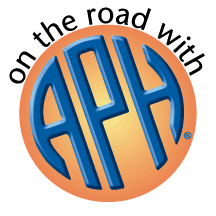
NIP Events
October 14-15, 2016
NIP: Adapted Physical Education Workshop
Louisville, KY
Product Trainings
October 24, 2016
APH Products Workshop
Batavia, NY
November 3-4, 2016
Technology and New Product Training for Educators and Families
Watertown, NY
Exhibits/Presentations
October 9-11, 2016
STEM Symposium 2016
Anaheim, CA
October 18-20, 2016
Division of Early Childhood Conference
Louisville, KY
November 3-4, 2016
Arizona AER Conference
Yuma, AZ
November 3-4, 2016
Indiana AER
Spencer, IN
November 6-8, 2016
NY State AER
Syracuse, NY
November 14, 2016
SCOPE Professional Day
Columbus, OH
Conferences
October 6-8, 2016
APH Annual Meeting
Louisville KY
October 27-29, 2016
2016 NBA Fall Professional Development Conference
St. Louis, MO
November 3-5, 2016
BANA Board Meeting, Fall 2016
Atlanta, GA
December 5-8, 2016
The SharePoint Technology Conference
Burlingame, CA
Subscribe to the APH News!
Get convenient email reminders every month when a new issue of the APH News is released.
It’s Easy!
- Prepare an email to aphinfo-request@iglou.com.
- Leave the subject blank.
- Type the word ‘subscribe’ (without any quote marks) in the body of the message.
- Send it!
APH News Credits
President:
Dr. Craig Meador
cmeador@aph.org
Editor:
Dorinda Rife, Vice President, Educational Services and Product Development
drife@aph.org
Designer:
Malcolm Turner, APH Website Coordinator
webmaster@aph.org
Thanks to the following APH staff:
- Cindy Amback, Support Specialist, Field Services
- Janie Blome, Director, Field Services
- Scott Blome, Director, Communications
- Kerry Isham, Field Services Representative
- Paul Ferrara, Social Media Coordinator, Communications
- Justin Gardner, Special Collections Librarian, Resource Services
- Mike Hudson, Director, APH Museum
- Stephanie Lancaster, Graphic Designer, Communications
- Drew Lueken, Support Specialist, Communications
- Artina Paris-Jones, Assistant, Field Services
- Ken Perry, Programmer, Technology Product Research
- Karen Poppe, Tactile Graphics Project Leader
- Mary Robinson, Assistant, Field Services
- Jeanette Wicker, Core Curriculum Consultant, Educational Research
- Debbie Willis, Director, Accessible Tests
Read our blog: Fred’s Head from APH.
For additional recent APH News, click the following:
September Issue
August Issue
July Issue
Archive of all previous issues – archive.aph.org/news/archive/
The APH News is a monthly publication from the American Printing House for the Blind:
1839 Frankfort Avenue
Louisville, KY 40206
800/223-1839
Please share this web link or any items that appear in this publication with anyone who might benefit.
Thank you.


